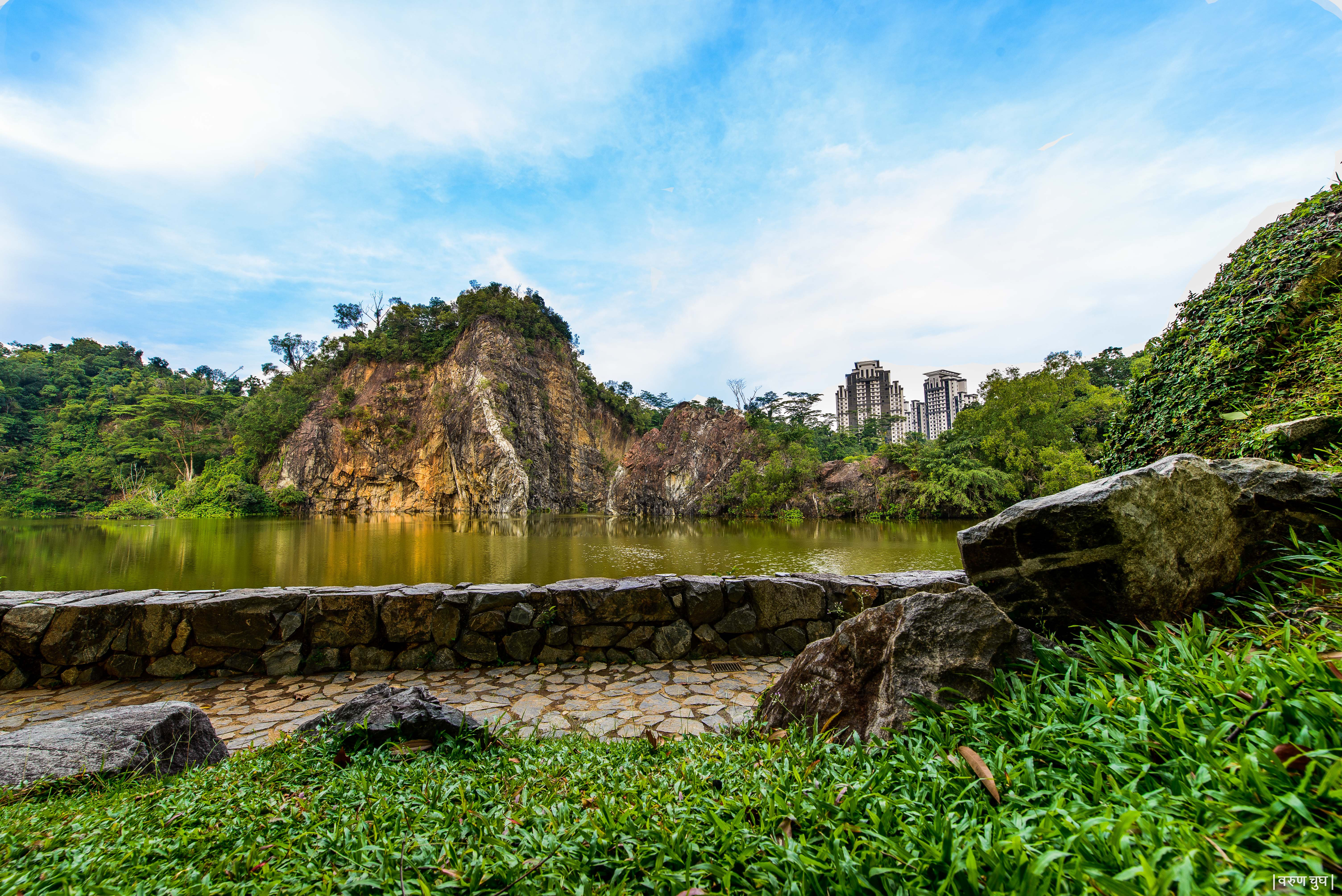
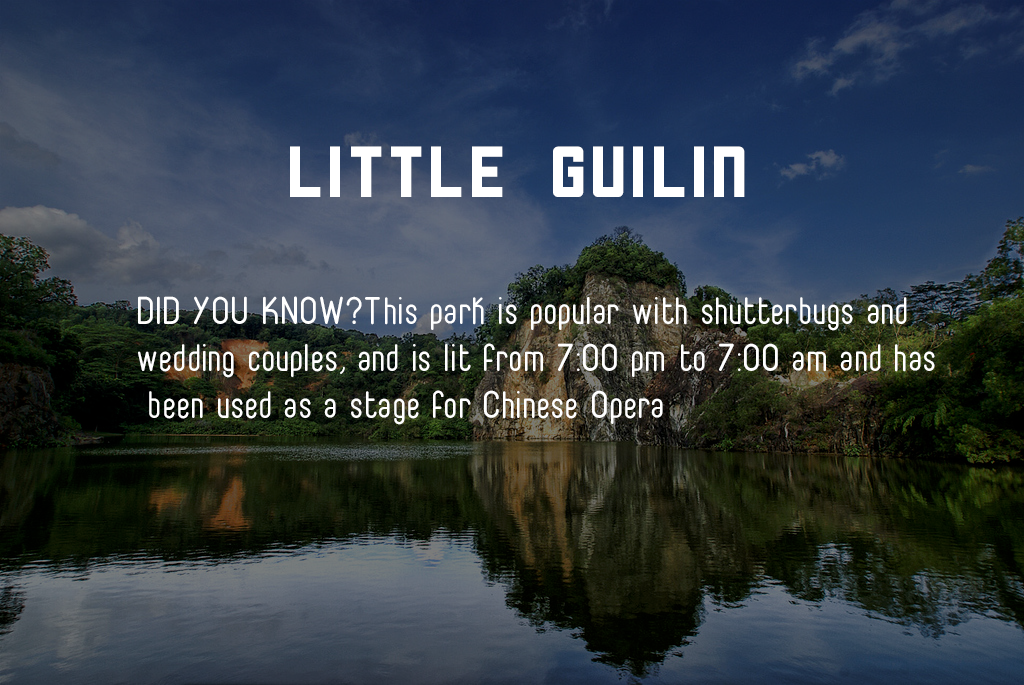
LITTLE GUILIN
Also known as Xiao Guilin among the locals, the Little Guilin looks similar to that of Guilin in China – a granite rock sitting within a lake. It was originally a disused granite quarry. In fact, the name "Bukit Batok" has been suggested to be derived from the noise made by the blasting in the granite quarry that now form the natural surroundings of Little Guilin.
FACT LIST
Location: Little Guilin, 小桂林.
Establish date: 1984
How it gets it's name: It is named Guilin as it looks similar to the Guilin in China, a granite rock sitting within a lake.
History: It was originally intended to fill the quarry up and build a road on it. However, it was converted to a pond instead when it was realized that the existing quarry had rugged granite outcrops and a contrasting backdrop of green hills that gave it a pleasant look.
Details about the location: The Little Guilin Park has a narrow strip of land and occupies 42 ha, well-landscaped and provided with footpaths.
Attractions: This park is popular with shutterbugs and wedding couples, and is lit from 7:00 pm to 7:00 am. Besides being used for exercise and walks, the town park has also been used as a stage for Chinese opera, dance and music performances such as the Heroine of the Water Margin. The park has also been suggested as an alternative destination for tourists wishing to see a different side of Singapore.
.jpg)
BUKIT BATOK SWIMMING POOL
Bukit batok have it's own swimming complex for the public to access and have their daily exercise and also a fun and enjoyable for families to have their day out on the weekends.
FACT LIST
Name: Bukit Batok Swimming Pool, 2 Bukit Batok Street 22 (659581)
Details about the location: Bukit Batok Swimming Complex offers a pleasant environment for which leisure swimmers can take a leisure away from the hustle and bustle of the city. This facility is also popular with schools for swimming lessons.
Attractions: This swimming complex have several types of pools and facilities provided for the public to use, such as Competition Pool, Teaching Pool, Wading Pool and a seating Capacity for 370 pax.
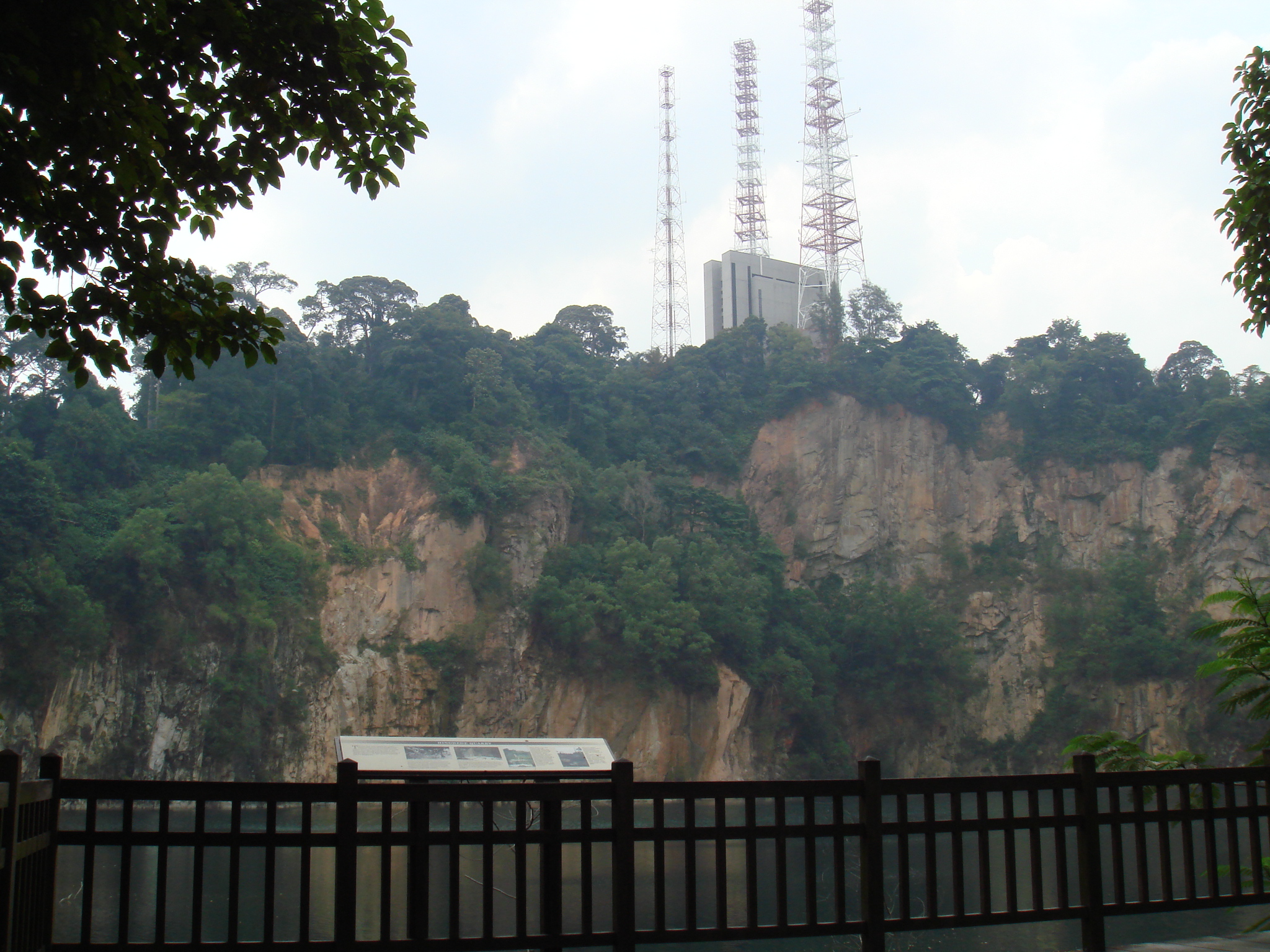
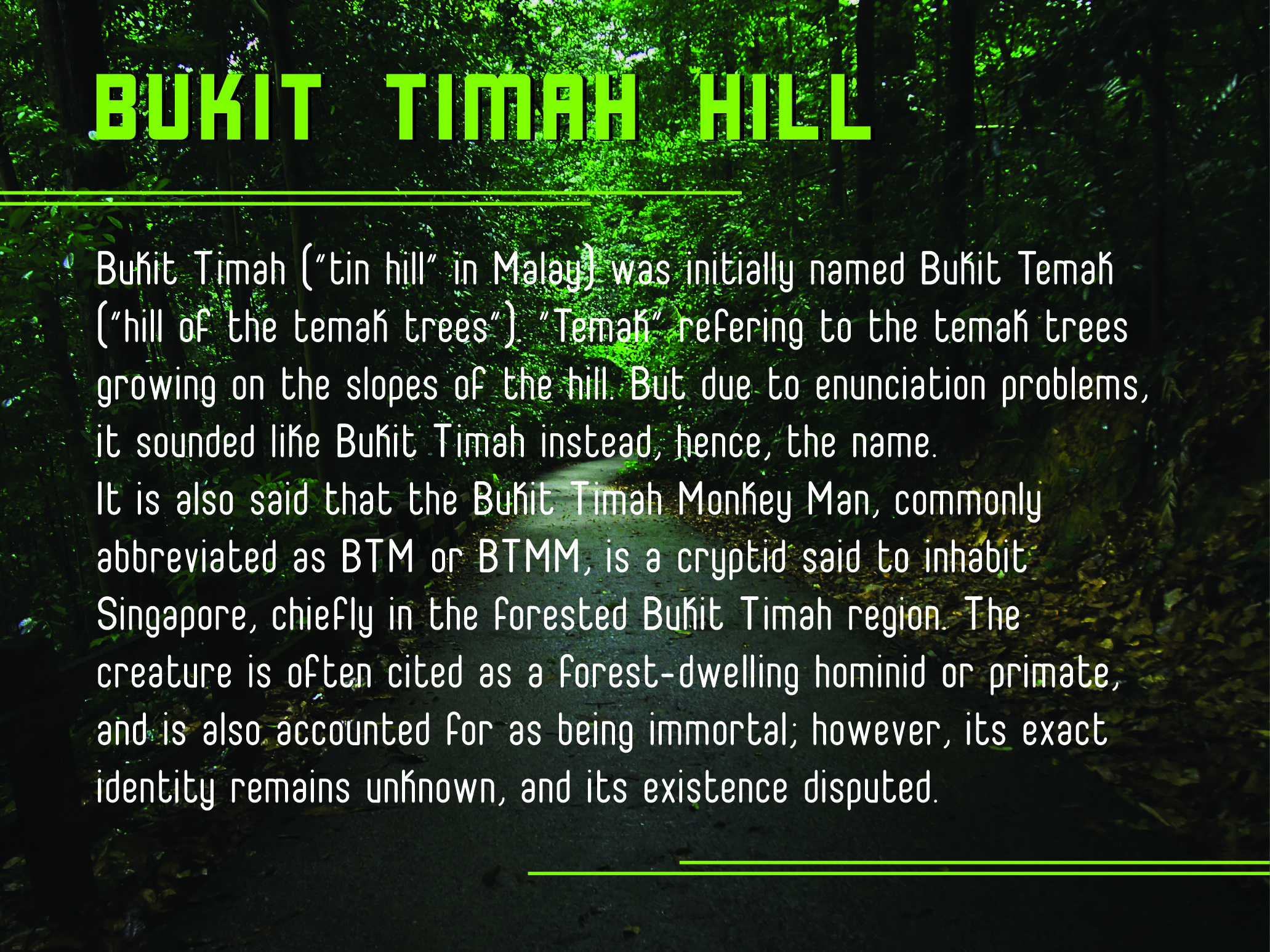
BUKIT TIMAH HILL
Bukit Timah Nature Reserve is home to 40% of our nation’s flora and fauna and has been a favourite spot for those looking to get close to nature.When the Reserve is fully open after restoration works are completed, you can visit the Reserve and journey back in time to the days before Sir Stamford Raffles arrived as you trek among the original vegetation and undisturbed tropical forest. Push yourself to the limits as you climb Singapore’s tallest hill on trails that wind through pockets of hill dipterocarp forest, not found anywhere else on the island.
FACT LIST
Location: Bukit Timah Hill
Establish date: 1883
History : Bukit Timah was one of the first forest reserves established in 1883, all the reserves were worked for timber with the exception of Bukit Timah Reserve. By 1937, the forest reserves were depleted under economic pressures for development. However, three areas, including the Bukit Timah Reserve, were retained for the protection of flora and fauna under the management of the Singapore Botanic Gardens.In 1951, further protection of the reserves were provided by the enactment of a Nature Reserves Ordinance and the establishment of a Nature Reserves Board for the administration of the reserves, now designated as nature reserves, which total some 28 square kilometres in area.
Attractions: There are several attraction such as recreation, primary activities at Bukit Timah are strolling, running and hiking. There are also smaller groups of people who rock-climband abseil at the Dairy Farm quarry as well as mountain biking.
Wildlife, Naturalists also treasure Bukit Timah for its variety of plants and animals, Some of the common plants there are the rattan, figs, and macaranga. Common animals include millipedes, carpenter bees, and many different types of bird, insects and spiders. Common insect species include cicadas and giant forest ants (Camponotus gigas).
Bukit Timah Hill was one of the location where several types of animal are discovered and the banded leaf monkey (Presbytis femoralis) was once found in Bukit Timah but the last individual from the Bukit Timah population died in 1987.
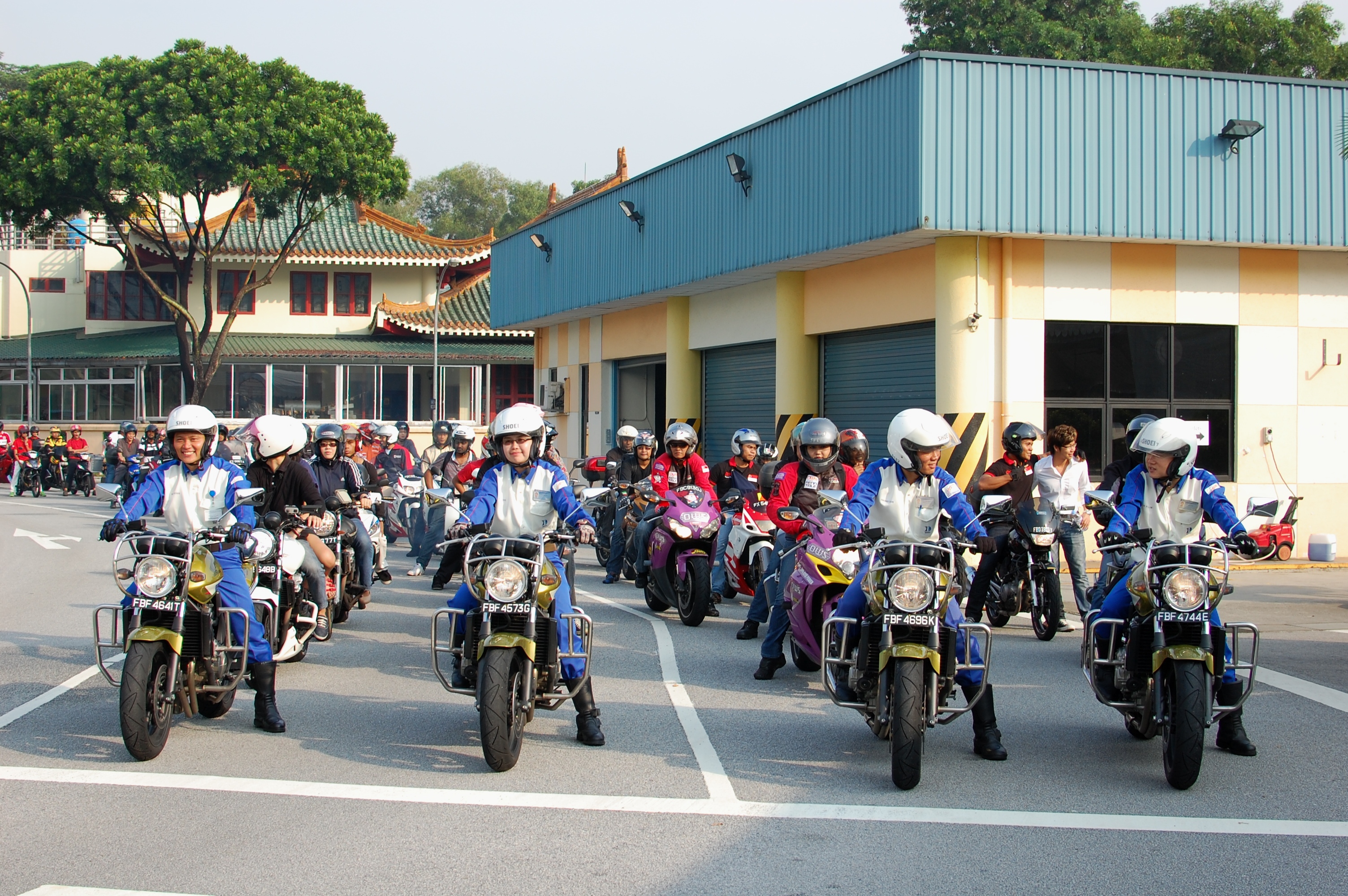

BUKIT BATOK DRIVING CENTRE
FACT LIST
Location: Bukit Batok Driving Centre, 815 Bukit Batok West Ave 5, Singapore 659085
Establish date: 15 April 1988
History : Bukit Batok Driving centre were officially opened on 6 April 1990 by Professor Jayakumar.
Details: Bukit Batok Driving Centre strive to be the best choice driving centre in Singapore where they provide high quality training and a pleasant learning experience in safe driving education through our team of dedicated staff. They follow their core value which are Professionalism, Respect,Team Work and Customer Focus.
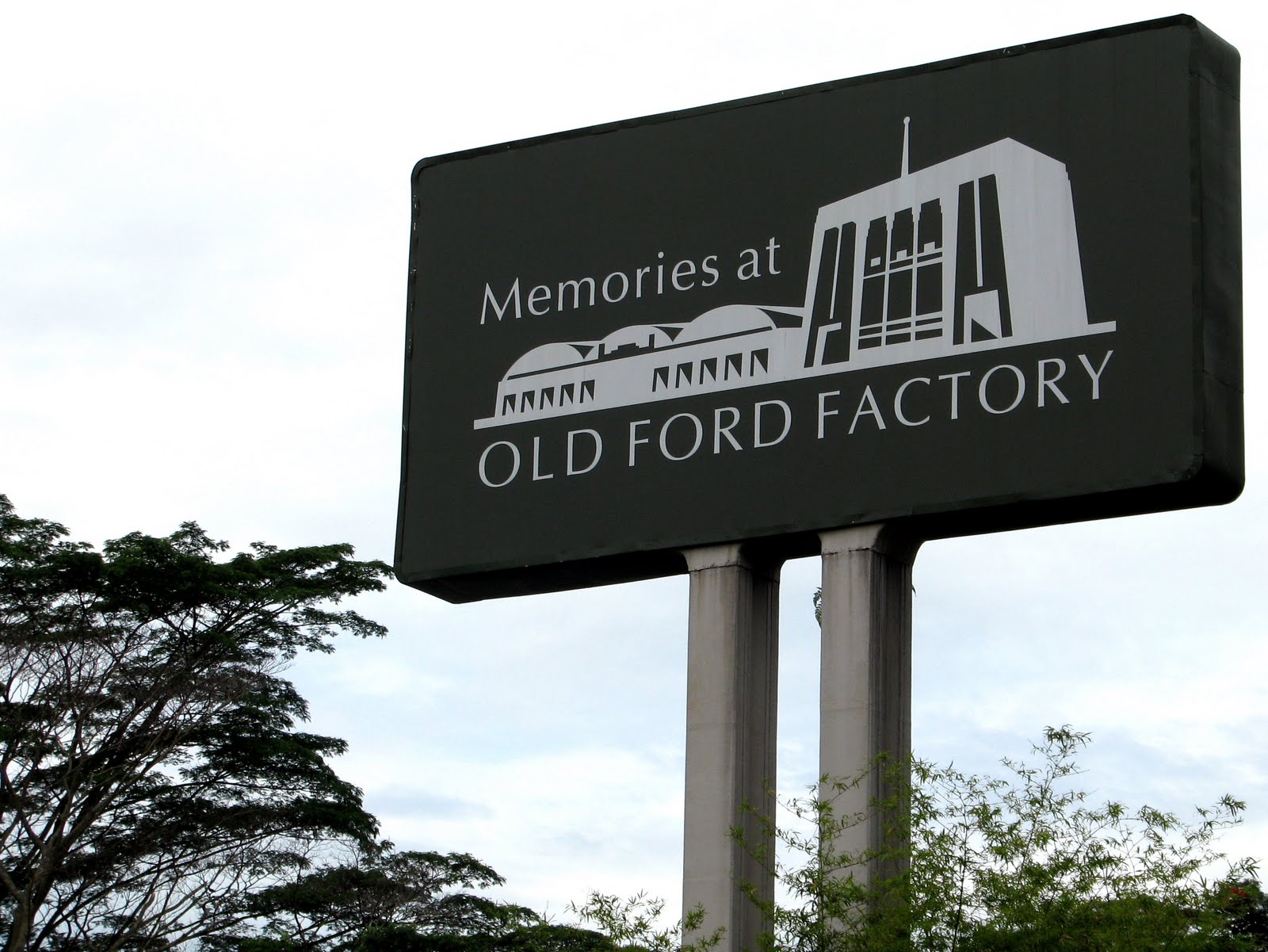
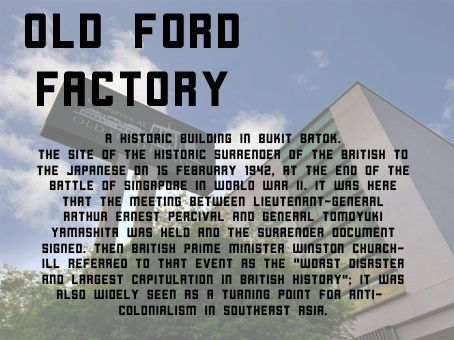
FORMER OLD FORD FACTORY
Built atop a little hill, the Former Ford Factory has been a visual landmark in Bukit Timah since its completion in 1941. As Ford Motor Company’s first automobile assembly plant in Southeast Asia, it bore witness to the booming manufacturing industry in Singapore in the twentieth century. The building is also remembered as the location where the British unconditionally surrendered Singapore to the Japanese in 1942.
FACT LIST
Location: Former Old Ford Factory, 351 Upper Bukit Timah Rd, Singapore 588192
Establish date: 1941
History : The factory is the site of the historic surrender of the British to the Japanese on 15 February 1942, at the end of the Battle of Singapore in World War II. It was here that the meeting between Lieutenant-General Arthur Ernest Percival and GeneralTomoyuki Yamashita was held and the surrender document signed. Then British Prime Minister Winston Churchill referred to that event as the "worst disaster and largest capitulation in British history"; it was also widely seen as a turning point for anti-colonialism in Southeast Asia.
Attractions: There are exhibition gallery set up for the public to view, the National Archives of Singapore (NAS), the new custodian of the historical site, has converted the building to house a World War II exhibition gallery andrepository called Memories at Old Ford Factory. The preserved Old Ford Motor Factory underwent a two-year, S$10.3 million facelift and is now NAS' second repository for its growing archives of various media. The permanent exhibition gallery showcases life in Singapore under Japanese rule, and the exhibition is a continuation from the one on the last battles fought at Bukit Chandu.


.jpg)



